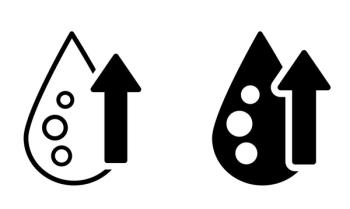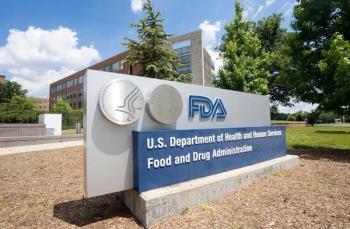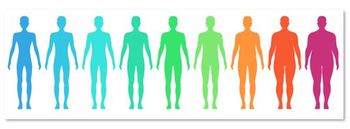
Coronary Risk Evaluation in Patients With Stroke or TIA
Coronary heart disease (CHD) is a significant cause of death in patients with a history of isch- emic stroke or transient ischemic attack (TIA). These patients may have no symptoms of CHD, yet they often have cardiac risk factors.
Coronary heart disease (CHD) is a significant cause of death in patients with a history of isch- emic stroke or transient ischemic attack (TIA). These patients may have no symptoms of CHD, yet they often have cardiac risk factors.
When is testing for asymptomatic CHD warranted in patients with cerebrovascular disease? Which studies are most appropriate in this setting? Answers can be found in recently released guidelines from the Stroke Council and the Council on Clinical Cardiology of the American Heart Association (AHA)/American Stroke Association (ASA).1 Here are the highlights of those guidelines.
PREVALENCE OF ASYMPTOMATIC CHD IN PATIENTS WITH STROKE OR TIA
Several small studies have shown that asymptomatic coronary artery disease may be present in 20% to 40% of patients with TIA or stroke.2-4 A comprehensive cardiovascular risk assessment is recommended for all patients with a history of cerebrovascular disease.5
RISK OF CARDIAC-RELATED DEATH
Short-term risk. The short-term risk (at 90 days) of fatal cardiac-related events is low (2% to 5%). Therefore, in patients without a history of CHD, evaluation for silent myocardial ischemia is generally not warranted during short-term hospitalization for stroke.
Intermediate- to long-term risk. Risk continues to be relatively low in the intermediate term (30 days to 2 years after a stroke). In the long term, however, the risk of cardiac- related death for ischemic stroke patients is 2 or more times greater than in age-matched controls.
Risk assessment based on ischemic stroke subtype. Subtypes of ischemic stroke that result from underlying atherosclerosis (such as carotid, vertebral, or intracranial stenosis) are associated with a higher risk of CHD than are nonatherosclerotic subtypes of stroke. The 5 stroke subtypes defined by the Trial of Org 10172 in Acute Stroke Treatment (TOAST)6 are listed in the Box.
If the carotid artery evaluation reveals significant stenosis or if other large vessels are atherosclerotic, consider noninvasive CHD testing. Defer testing in patients with small-vessel disease but no other cardiac risk factors. Test patients with other stroke subtypes based on their risk profile.
ESTIMATING CARDIAC RISK
Evaluate all patients with isch- emic stroke or TIA for cardiovascular risk. A scoring system based on data from the Framingham Study can be used (Table).7 The patient's score is based on age, sex, total blood cholesterol, high-density lipoprotein cholesterol level, systolic blood pressure, presence of diabetes, and smoking status. The scores are then used to assess relative and absolute risk of CHD for men (Figure 1) and women (Figure 2). Consider further testing and risk factor control for those patients who score in the high-risk category for CHD (10-year CHD risk of at least 20%). The Framingham data were derived from patients of European descent; however, the scores are still considered useful in most other populations because potential differences are likely to be small.
Exercise ECG. Current American Council of Cardiology (ACC)/ AHA guidelines recommend exercise testing for asymptomatic persons at high risk for CHD because of other diseases.8 While stroke is not specifically mentioned, the guidelines suggest that some stroke types may impart intermediate or high pretest probability of CHD and warrant exercise testing. Current data suggest that the exertion from stress testing after stroke is associated with a low risk of cardiovascular complications.9,10 Furthermore, a measure of safety is provided by close monitoring and the preselection of patients without a history of CHD.
While useful in providing an estimate of functional capacity, exercise testing should not be used in patients with conditions that produce an abnormal resting ECG (such as left bundle-branch block or left ventricular hypertrophy). Consider referring patients with significant functional impairment for pharmacologic stress protocols (nuclear myocardial perfusion imaging or echocardiography).
Nuclear myocardial perfusion imaging. Caution is warranted when this test is administered to patients with hypotension at baseline. Pharmacologic stress agents (vasodilators such as adenosine or dipyridamole) frequently used during nuclear imaging may cause a 10 mm Hg drop in systolic and diastolic blood pressure.
Stress echocardiography. Patients should be monitored closely during this test, because the preferred agent (dobutamine) may cause a drop in systemic blood pressure in low doses and hypertension in high doses.
MANAGEMENT OF ASYMPTOMATIC CHD
Significant data on optimal therapy for asymptomatic patients with evidence of ischemia on noninvasive tests (such as very abnormal exercise ECG results) are lacking even though those patients have a poorer prognosis than controls.11-13 However, the prognosis improves with medical treatment or revascularization anti-ischemic therapy such as coronary bypass surgery or angioplasty. Therefore, consider therapy beyond risk reduction for patients with asymptomatic CHD and silent ischemia. Because there are no conclusive data on outcomes in patients with concomitant coronary and cerebrovascular arterial disease, the following recommendations are based on opinion.
Atenolol therapy. One trial of 306 ambulatory patients showed that anti-ischemic therapy with 100 mg of atenolol per day14 reduced daily episodes of silent ischemia and adverse outcomes in patients with CHD. However, the number of patients with cerebrovascular disease in this study is unknown, so comparisons of this group with patients who have CHD alone are not possible.
Angioplasty. A study of 558 patients compared medical combination therapy with either atenolol/nifedipine or diltiazem/isosorbide dinitrate, coronary angioplasty, and coronary bypass surgery.15 Researchers followed patients for up to 1 year with ambulatory ECG monitoring and exercise testing. Angioplasty (along with other revascularization therapy) was found to be more effective in suppressing myocardial ischemia than medical therapy.
Coronary bypass surgery. In the same study,15 coronary bypass surgery was found to be most effective in treating myocardial ischemia and resulted in the fewest adverse events. However, the incidence of concomitant CHD and cerebrovascular disease is unknown, and the cost-effectiveness of coronary bypass surgery was not studied.
Coronary artery bypass graft surgery. The ACC/AHA practice guidelines for coronary artery bypass graft (CABG) surgery, although not specific to stroke patients, are reasonable when noninvasive testing produces significant evidence of CHD. CABG is a class I recommendation in asymptomatic patients who have significant left main CHD, left main equivalent (significant stenosis of proximal left anterior descending artery and proximal left circumflex artery), or 3-vessel disease. In patients with proximal left anterior descending artery stenosis with 1- or 2-vessel disease, CABG is a class IIa recommendation.16 When developing individual treatment plans, take into consideration that stroke patients are likely to be at risk for complications of surgery.
CAROTID ENDARTERECTOMY
In most cases, patients should not be tested for CHD before undergoing carotid endarterectomy (CE). Only those patients at high risk for CHD based on atherosclerotic risk profile should be routinely tested. Currently, there is no consensus regarding the optimal or necessary method of assessing cardiac and medical risks before CE.
RISK FACTOR REDUCTION
Aggressive risk factor reduction is an important part of the management of stroke patients, particularly those with artherosclerotic risk factors and subclinical CHD detected by testing. The 2001 guidelines for secondary prevention of heart attack and death in patients with coronary and other vascular disease from the ACC/AHA17 include the following:
Smoking cessation.
Blood pressure control.
Lipid management.
Physical activity.
Weight management.
Diabetes management.
Use of antiplatelet agents/ anticoagulants.
Use of ACE inhibitors (unless contraindicated).
Use of β-blockers (unless contraindicated). n
References:
REFERENCES:
1. Adams RJ, Chimowitz MI, Alpert JS, et al, for the American Heart Association/American Stroke Association. Coronary risk evaluation in patients with transient ischemic attack and ischemic stroke: a scientific statement for healthcare professionals from the Stroke Council and the Council on Clinical Cardiology of the American Heart Association/American Stroke Association. Stroke. 2003;34:2310-2322.
2. Rokey R, Rolak LA, Harati Y, et al. Coronary artery disease in patients with cerebrovascular disease: a prospective study. Ann Neurol. 1984;16:50-53.
3. Di Pasquale G, Andreoli A, Pinelli G, et al. Cerebral ischemia and asymptomatic coronary artery
disease: a prospective study of 83 patients. Stroke.
1986;17:1098-1101.
4. Di Pasquale G, Pinelli G, Grazi P, et al. Incidence of silent myocardial ischaemia in patients with cerebral ischaemia. Eur Heart J. 1988;9(suppl N):104-107.
5. Chobanian AV, Bakris GL, Black HR, et al. The seventh report of the Joint National Committee on Prevention, Detection, Evaluation, and Treatment of High Blood Pressure: the JNC 7 report. JAMA. 2003;289:2560-2572.
6. Adams HP Jr, Bendixen BH, Kappelle LJ, et al. Classification of subtype of acute ischemic stroke: definitions for use in a multicenter clinical trial. TOAST: Trial of Org 10172 in Acute Stroke Treatment. Stroke. 1993;24:35-41.
7. Grundy SM, Pasternak R, Greenland P, et al. As-
sessment of cardiovascular risk by use of multiple-risk-factor assessment equations: a statement for healthcare professionals from the American Heart Association and the American College of Cardiology. Circulation. 1999;100:1481-1492.
8. Gibbons RJ, Abrams J, Chatterjee K, et al. ACC/ AHA 2002 guideline update for the management of patients with chronic stable angina: a report of the American College of Cardiology/American Heart Association Task Force on Practice Guidelines (Committee to update the 1999 guidelines for the management of patients with chronic stable angina). Available at: www.americanheart.org/downloadable/ heart/1044991838085StableAnginaNewFigs.pdf. Accessed January 16, 2004.
9. Macko RF, Katzel LI, Yataco A, et al. Low-velocity graded treadmill stress testing in hemiparetic stroke patients. Stroke. 1997;28:988-992.
10. Roth EJ, Lovell L, Harvey RL, et al. Incidence of and risk factors for medical complications during stroke rehabilitation. Stroke. 2001;32:523-529.
11. Tzivoni D, Gavish A, Zin D, et al. Prognostic significance of ischemic episodes in patients with previous myocardial infarction. Am J Cardiol. 1988; 62:661-664.
12. Killip T. Silent myocardial ischemia: some good news. Circulation. 1997;95:1992-1993.
13. Marcassa C, Galli M, Baroffio C, et al. Ischemic burden in silent and painful myocardial ischemia: a quantitative exercise sestamibi tomographic study. J Am Coll Cardiol. 1997;29:948-954.
14. Knatterud GL, Bourassa MG, Pepine CJ, et al. Effects of treatment strategies to suppress ischemia in patients with coronary artery disease: 12-week results of the Asymptomatic Cardiac Ischemia Pilot (ACIP) Study. J Am Coll Cardiol. 1994;24:11-20.
15. Pepine CJ, Cohn PF, Deedwania PC, et al. Effects of treatment on outcome in mildly symptomatic patients with ischemia during daily life: the Atenolol Silent Ischemia Study (ASIST). Circulation. 1994;90:762-768.
16. Eagle KA, Guyton RA, Davidoff R, et al. ACC/AHA guidelines for coronary artery bypass graft surgery: executive summary and recommendations: a report of the American College of Cardiology/American Heart Association Task Force on Practice Guidelines (committee to revise the 1991 guidelines for coronary artery bypass graft surgery). Circulation. 1999;100:1464-1480.
17. Smith SC Jr, Blair SN, Bonow RO, et al. AHA/ ACC guidelines for preventing heart attack and death in patients with atherosclerotic cardiovascular disease: 2001 update. A statement for healthcare professionals from the American Heart Association and the American College of Cardiology. Circulation. 2001;104:1577-1579.
Newsletter
Enhance your clinical practice with the Patient Care newsletter, offering the latest evidence-based guidelines, diagnostic insights, and treatment strategies for primary care physicians.

















































































































































































































































































